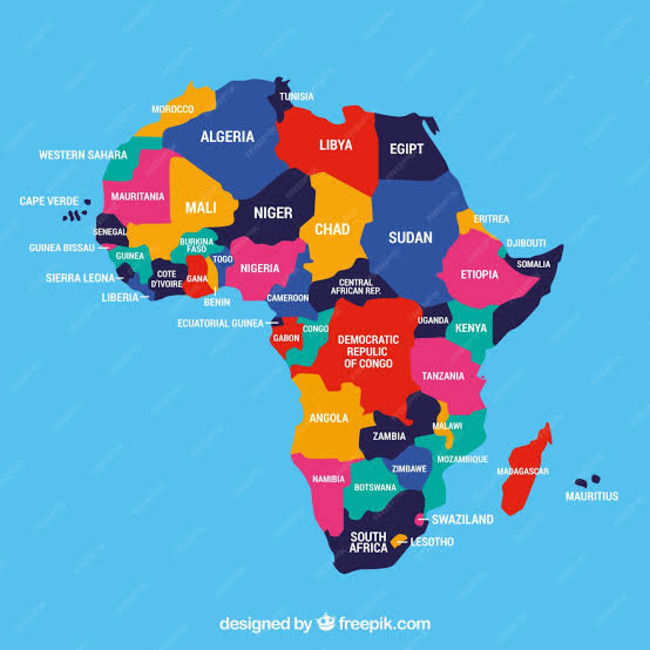Africa has a complex history of colonization, with various European powers carving out territories and exerting control over vast parts of the continent. Here is an overview of the colonization of 20 African countries.
- Egypt:
Egypt was colonized by the British Empire in 1882-1952.
The British took control of Egypt in 1882, turning it into a protectorate. However, Egypt retained nominal independence until 1952 when it gained full sovereignty.
- Ethiopia:
Ethiopia was not colonized by any country (with the exception of the Italian occupation between 1936-1941).
It remained one of the few African countries that successfully resisted colonization, thanks to Emperor Menelik II’s leadership and a series of victories against Italian colonial forces.
- Ghana (formerly Gold Coast):
Ghana was colonized by the British Empire between 1874-1957.
British influence in the Gold Coast began with trading posts in the 17th century. It later became a British crown colony, with the British exerting control over the region’s resources and economy. Ghana became the first sub-Saharan African country to gain independence in 1957.
- Kenya:
Kenya was colonized by the British Empire between the period of 1895-1963
Kenya became a British protectorate in the late 19th century, primarily for its strategic location and fertile lands. The British implemented policies such as the concentration of Africans in reserves and the development of a cash-crop economy, which led to social and political unrest. Kenya gained independence in 1963.
- Liberia:
Colonized by none (Established by African-American settlers) between the period of 1822-1847
Liberia was settled by freed African-American slaves and became an independent nation in 1847. While not formally colonized, it experienced influence and economic dominance from European powers, particularly the United States.
- Libya:
Libya was colonized by Italy in 1911-1947.
Italy occupied Libya in 1911 after defeating the Ottoman Empire.
During the colonization period, Libya experienced significant resistance led by Libyan nationalists. After World War II, Libya gained independence in 1951.
- Morocco:
France and Spain (partial) in 1912-1956. France and Spain established protectorates in Morocco.
The French controlled most of the country, while Spain occupied the northern regions. Morocco achieved independence from both colonial powers in 1956.
- Mozambique:
Portugal colonized them between the period of 1505-1975.
Mozambique was one of Portugal’s oldest colonies in Africa. Over centuries, Portugal exploited its resources, particularly through the slave trade and the development of mines and plantations. Mozambique gained independence in 1975.
- Namibia:
Namibia was colonized by Germany and South Africa. This happened between 1884-1990.
Namibia was initially a German colony until the end of World War I, when South Africa took control under a League of Nations mandate.
South Africa’s occupation was widely regarded as apartheid rule, resulting in a long struggle for independence. Namibia gained independence in 1990.
- Niger:
Niger was colonized by France in 1890-1960.
France asserted its control over Niger in the late 19th century. The colony became part of French West Africa and experienced economic exploitation. Niger achieved independence in 1960.
READ ALSO: Early Breakfast Key to a Healthy Lifestyle
This is just a glimpse of African countries’ colonization histories. Each country has a unique story that shaped its struggle for independence and development. The legacies of colonization continue to influence political, social, and economic dynamics on the continent to this day.
- Algeria:
Colonized by France in 1830 through a series of military conquests, Algeria experienced a brutal colonization marked by resistance and conflict. It gained independence in 1962.
- Angola:
Portugal colonized Angola in the late 15th century, establishing a slave trade that lasted for centuries. Angola finally gained independence in 1975 after a prolonged armed struggle.
- Benin:
French colonial influence in Benin emerged through a series of treaties in the late 19th century. France expanded control over the region, known as French Dahomey, until Benin achieved independence in 1960.
- Botswana:
Botswana managed to remain mostly autonomous during the colonial era. It signed protection treaties with the British in the 1880s, maintaining strong political ties while avoiding direct colonization.
- Burkina Faso:
France colonized Burkina Faso, previously known as French Upper Volta, starting from the late 19th century. It obtained independence in 1960, with ongoing political turbulence.
- Burundi:
Germany established control over Burundi, part of German East Africa, in the late 19th century. After World War I, Belgium took over until Burundi gained independence in 1962.
- Cabo Verde (Cape Verde):
Portugal colonized the uninhabited Cape Verde islands in the 15th century, exploiting them for their strategic location. Cape Verde achieved independence in 1975.
- Cameroon:
German colonization of Cameroon began in the late 19th century, but after World War I, it was divided between France and Britain as League of Nations mandates. It attained independence in 1960.
- Central African Republic (CAR):
France colonized the area known as French Equatorial Africa, which included CAR. The country gained independence in 1960, marked by subsequent political instability.
- Chad:
During the Scramble for Africa, France took control of Chad as part of French Equatorial Africa in the late 19th century. Chad became independent in 1960.


2 Replies to “Historical Perspective of Colonization of Some African Countries ”